Discover 11 hidden attractions, cool sights, and unusual things to do in Tripoli (Libya). Don't miss out on these must-see attractions: Red Castle, Tripoli Cathedral, and Karamanli Mosque. Also, be sure to include Red Castle Museum in your itinerary.
Below, you can find the list of the most amazing places you should visit in Tripoli (Tripoli).
Table of Contents
Red Castle
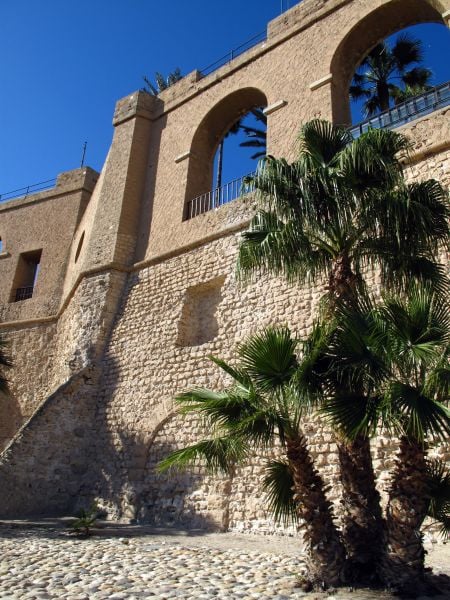
The Red Castle, in Arabic As-saraya Al-hamra, sometimes also Red Fort or Red Saraya, is a major landmark on the waterfront of Tripoli, bordering Martyrs' Square. It has been the home of the Red Castle Museum since 1919, and of the Libyan Department of Archaeology since 1952.[1]
Tripoli Cathedral
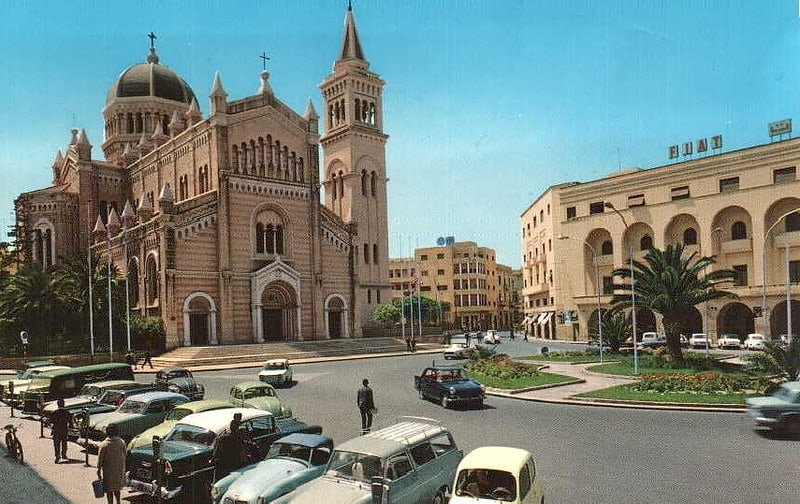
Mosque in Libya. Algeria Square Mosque or Jamal Abdul Nasser Mosque, formerly Tripoli Cathedral, is a mosque and former Roman Catholic church located in Tripoli, the capital of Libya. It is situated on the Algeria/Elgazayer Square then Piazza della Cattedrale in the city centre.
It was constructed as a cathedral in the 1920s during the Italian Libya colonial era, and converted into a mosque in 1970, with the St. Francis Pro-Cathedral now serving as temporary cathedral for the Apostolic Vicariate of Tripoli.[2]
Karamanli Mosque
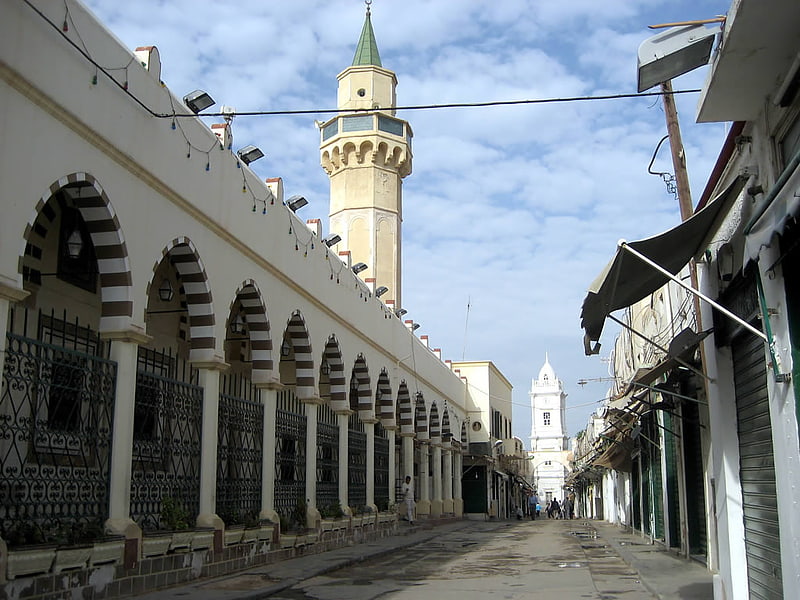
The Karamanli Mosque, also known as the Ahmed Pasha Mosque is an 18th-century mosque in Tripoli, Libya.[3]
Red Castle Museum
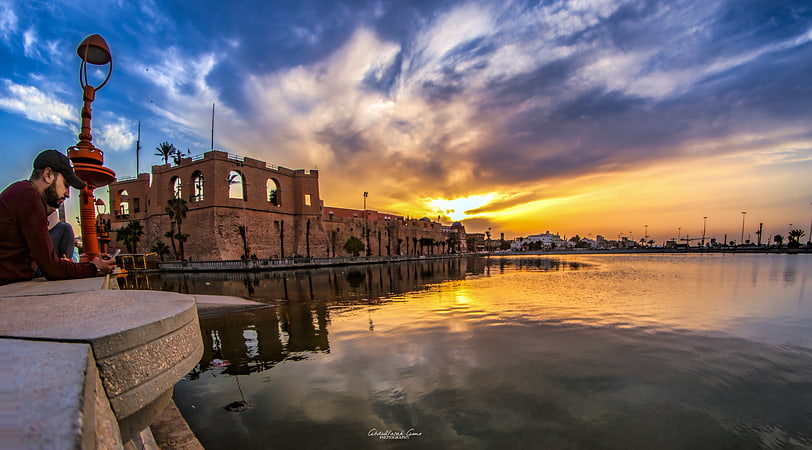
Also known as: متحف السرايا الحمراء
History exhibits in the Red Castle. The Red Castle Museum, also known as As-saraya Al-hamra Museum, the Archaeological Museum of Tripoli or Jamahiriya Museum, is a national museum in Libya. It is located in the historic building known as the Red Castle of Tripoli, sometimes also referred to as Red Saraya, on the promontory above and adjacent to the old-town district with medina Ghadema.
Designed in conjunction with UNESCO, the museum covers 5,000 years from prehistory to the independence revolution (1953) era. The museum has an entrance on historic As-Saha al-Kradrah, the Martyrs' Square. The museum has been closed since 2011.[4]
Martyrs' Square
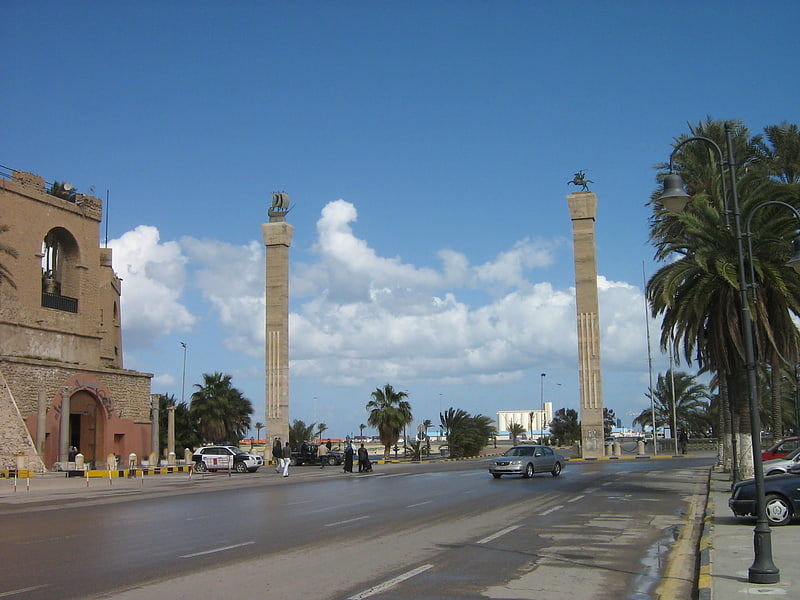
Also known as: ميدان الشهداء
Historical landmark in Tripoli, Libya. The Martyrs' Square; known as Green Square under the Gaddafi government; Independence Square during the monarchy; and originally known as Piazza Italia is a downtown landmark at the bay in the city of Tripoli, Libya. The main commercial center of the city surrounds the square. The Square is also a main tourist attraction in Tripoli. It has a large legendary fountain done by an Italian architect at the centre of the square. The square is the meeting point of many different avenues. Omar Mukhtar Avenue is one of the longest in North Africa, it was built by Italians in the colonial time, and Libyans during the era of King Idris I. Independence Street branches from the square too, and it leads to the Palace of King Idris I. 24 December Avenue is also an Italian built avenue. Mizran Street is the last street that branches from the Martyrs' Square.[5]
Arch of Marcus Aurelius

Also known as: قوس ماركوس أوريليوس
Historical landmark in Tripoli, Libya. The Arch of Marcus Aurelius is a Roman triumphal arch in the city of Oea, modern Tripoli, Libya, where it is found near the northeastern entrance to the Medina.[6]
Address: Old City, Tripoli
Gurgi Mosque
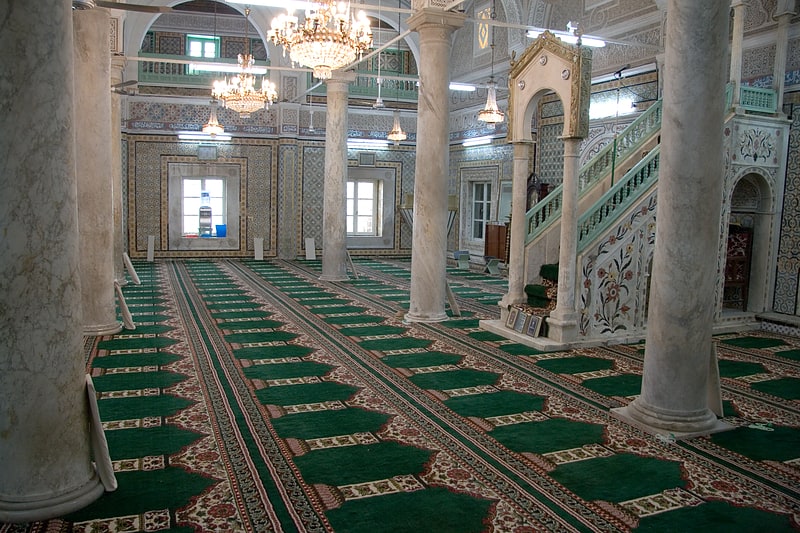
Also known as: جامع قرجي
Historic mosque with ornate details. The Gurgi Mosque is a mosque in Tripoli, Libya. It lies in the heart of old Tripoli as part of a complex of historic buildings. The mosque is an important tourist attraction, as is the area as a whole; nearby is the Roman Arch of Marcus Aurelius.
The mosque was commissioned by Mustafa Gurgi and built in 1834. Tripoli then was under Ottoman ruler Pasha Yusuf Karamanli, whose reign extended from 1795 to 1832.
The Gurgi Mosque was built by the command of the naval captain Mustafa Gurgi. Gurgi is an Arabic word which means "from Georgia". To the right of the entrance lies the antechamber which houses the tombs of Gurgi and his family.[7]
Address: Al Hara Alkabir St, Tripoli
Sidi Darghut Mosque
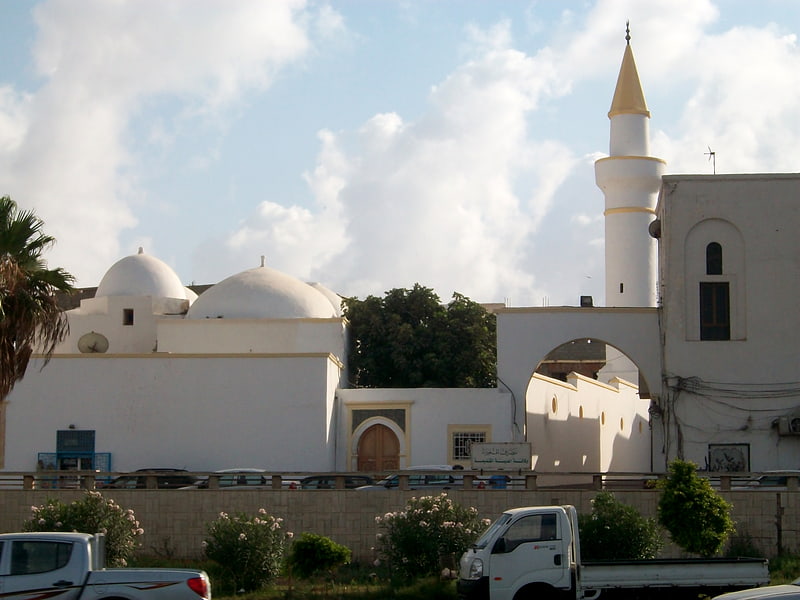
The Sidi Darghut Mosque or Jama Sidi Darghut is a mosque in Tripoli, Libya. It was built in around 1560 by Dragut on the site of a Hospitaller church, parts of which were incorporated into the mosque. The mosque was damaged in World War II but it was subsequently repaired, although the reconstruction was not completely faithful to its original design.[8]
St. Francis Pro-Cathedral
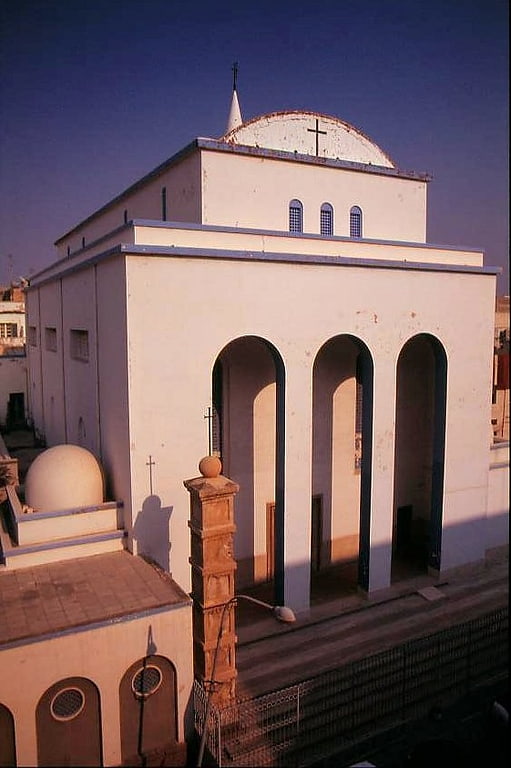
Cathedral. The St. Francis Pro-Cathedral or simply Church of St. Francis, is a Roman Catholic church located in the city of Tripoli, Libya.[9]
Tripoli Zoo
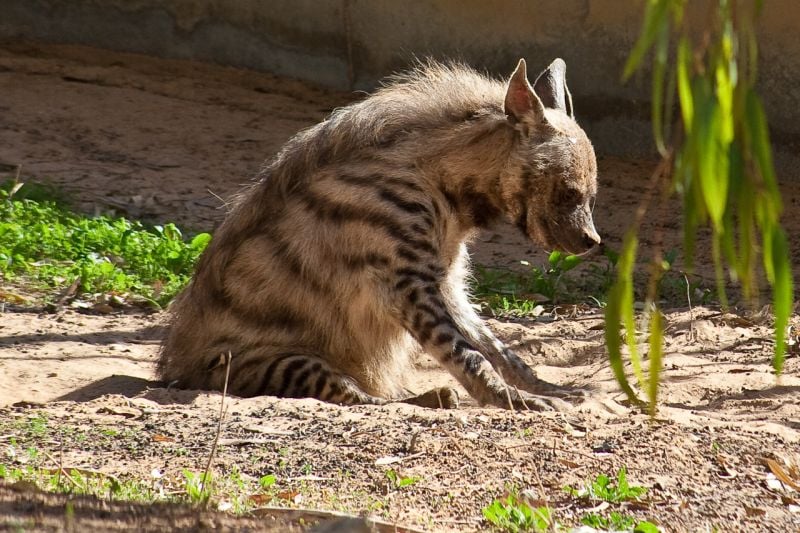
Zoological garden in Libya. Tripoli Zoo is a zoological garden and botanical garden in Tripoli, Libya. Located south of Tripoli's city center adjacent to Tarabulus Zoo Park, it is a large reserve of plants, trees and open green spaces and is the country's biggest zoo.[10]
Karamanly House Museum

Also known as: حوش القره مانلي
Museum in Tripoli, Libya. The Karamanly House Museum is a historic house and museum located in the Old city in Tripoli, Libya. It is associated with the Karamanli dynasty.
The house was built in the second half of the 18th century. After restoration in the 1990s, it became a museum.[11]